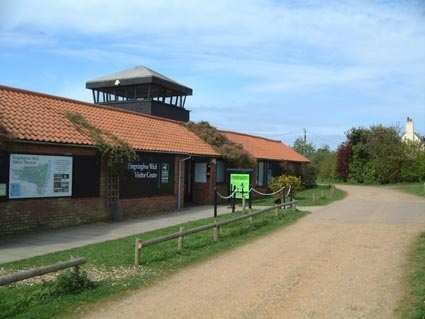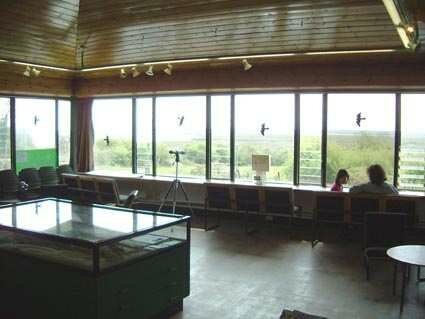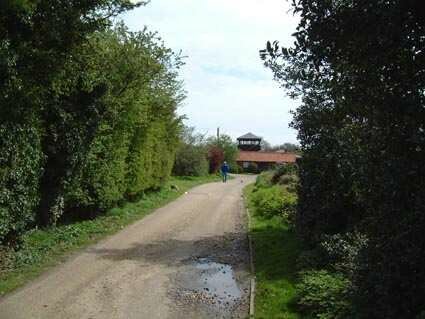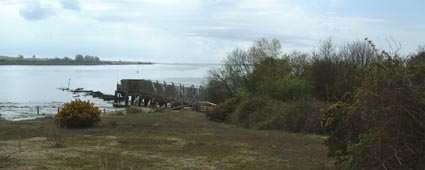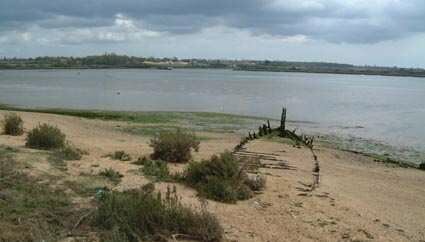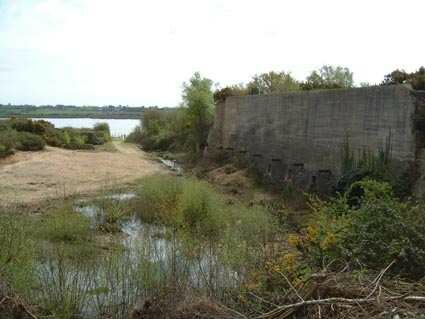For more details of the Fingringhoe Wick reserve , please click here
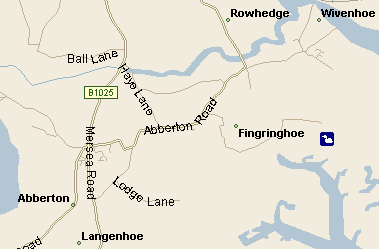 Copyright 19882000 Microsoft Corp. and/or its suppliers. All rights reserved. http://www.microsoft.com/autoroute 1999 Navigation Technologies B.V. and its suppliers. All rights reserved. Selected Road Maps Copyright 1999 by AND International Publishers N.V. All rights reserved. Crown Copyright 1999. All rights reserved. |
Web Page Author and photographs: Stephen D Anderson
Probably the premier nature reserve in Essex with lots of appeal to visitors of all ages. The reserve is owned by the Essex Wildlife Trust and has been managed by them for nearly 40 years. Fingringhoe Wick used to be gravel workings until 1959. The Essex Wildlife Trust acquired it soon after gravel extraction ended and has maintained a wide variety of habitats from the estuary foreshore to the freshwater lake, from sandy scrub to mature woodland.
The reserve centre, for long the headquarters of the Essex Wildlife Trust, has both an observation tower (reached via a spiral staircase) and a ground floor exhibition area and observation room. There are toilets and a shop. There are wonderful views from the centre across the marshes to Mersea, where owls and harriers hunt in winter and where waders and geese roost at high tide. There are also hides overlooking the lake and the estuary, several of which are suitable for the disabled. The most unusual hide is the Jetty Hide, built at the end of the old quarry jetty which was used to load gravel onto barges that tied up alongside. There are also several way-marked walks, one of which takes the visitor through the back of the reserve which consists largely of woodland. In spring the migrants arrive; Sand Martins, Swallows, Turtle Doves, Cuckoos and, most famously, Nightingales. By mid April upwards of 30 male Nightingales establish their territories and start vocal duels with their neighbours, and this time of year is the best opportunity for the visitor to hear and see these shy birds. Flocks of Brent Geese provide the visitor with wonderful sights in the winter. The best time of day to visit the reserve is early in the morning, the reserve opens every day at 9:00 am. although the birds on the estuary are at their best two hours before or after high tide. Non members are requested to make a donation when visiting the reserve.
Fingringhoe Wick is an excellent place to visit all year round for all keen naturalists but do visit in April and May to see and hear its Nightingales one of the highlights of Essexs natural history. At least 350 species of flowering plants have been recorded. Time, helped by the development of scrub and woodland and the more recent fall in the water table due to prolonged drought, has brought about the loss of some species and the gain of others. Common spotted orchids and bee orchids are present. The shaded, humid conditions in the thickets suit ferns, mosses and lichens. Visit in spring for tiny unobtrusive clovers, medicks and trefoils. Summer is best for colourful species, especially sea lavender on the saltmarsh, and masses of dog roses. The Wick teems with insect life. As you would expect of an old gravel pit with a great deal of water, many species are water-dependent. The dragonflies and damselflies are renowned: thirteen species breed on the reserve. Over 700 moth species have been recorded. Many common butterflies flourish, together with the more localised green hairstreak. The sandy, eroding cliff faces are attractive to many bees, ants, wasps and ichneumons. Strangely for a site with so much water, frogs are almost unknown at The Wick, although there is a tiny breeding population of toads. Common lizards, slow worms, and smooth newts are abundant. Great crested newts, adders and grass snakes are reported regularly. Directions
Three miles south-east of Colchester, signposted from there with brown-and-white Nature Reserve signs. Take the B1025 from Colchester towards Mersea for three miles. After crossing the Roman River turn first left and follow the signs to the reserve. The lanes between Fingringhoe village and the reserve are narrow please drive with caution. A 10 mph limit is in force on the reserve itself. A metalled road leads to the Centre car park. One bus per day operates between Colchester and Fingringhoe. The reserve is 1.5 miles from the village. The Centre is open daily from 9 am 5 pm and the reserve from 9 am to 5 pm (winter) or 7 pm (summer), excluding Christmas Day and Boxing Day. All visitors to the nature reserve are required to enter the Fingringhoe Centre first, to obtain the necessary day permit. The Trust invites donations from non-members of 1 or more for adults and 50p for children. The Centre has a toilet for disabled visitors. A short nature trail (leaflet available) is suitable for people in wheelchairs. Two bird hides that overlook the lake have concrete access paths and low-level viewing slots. Car parking for disabled visitors is signposted. A wheelchair is available in the Centre for the elderly. Dogs are allowed within the nature reserve only on a lead. Please use the signposted dog route. They are not permitted elsewhere, nor in Centre or hides.
|
Page last updated:
Web Design Graham Mee. © Copyright of all pages South East Essex RSPB Local Group. All images copyright of owners
The Royal Society for the Protection of Birds. Registered charity no 207076


